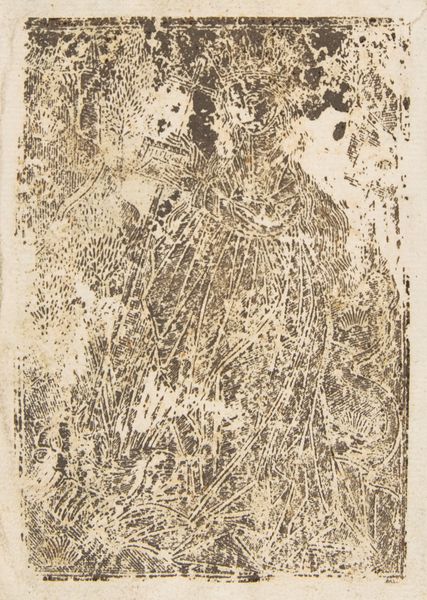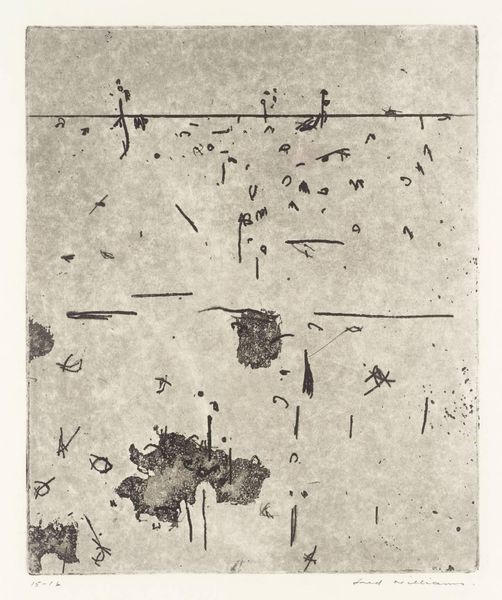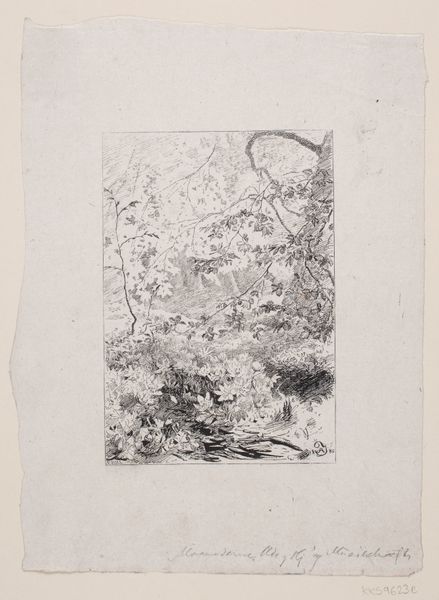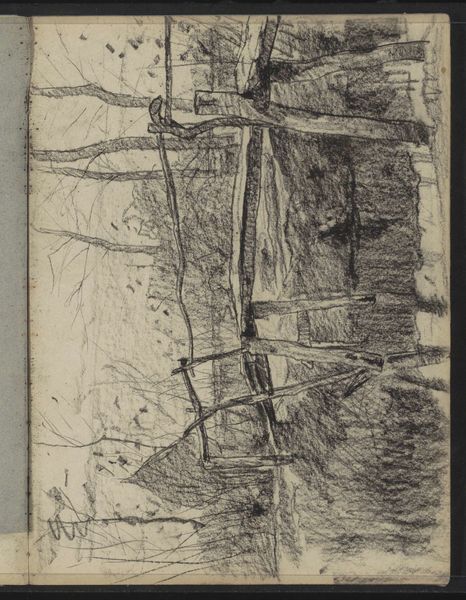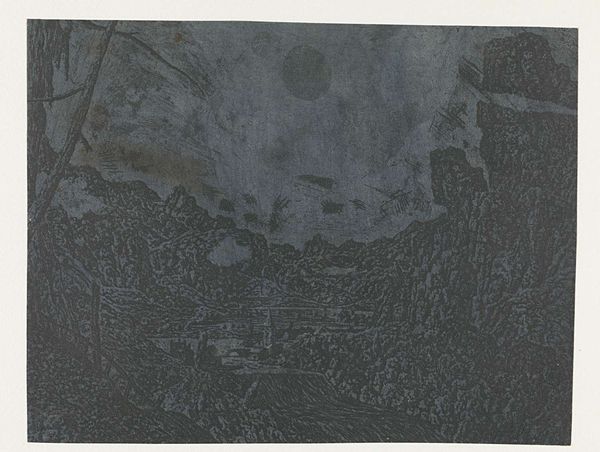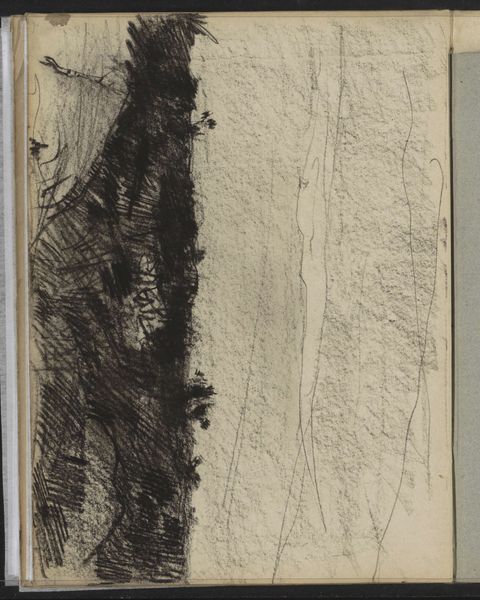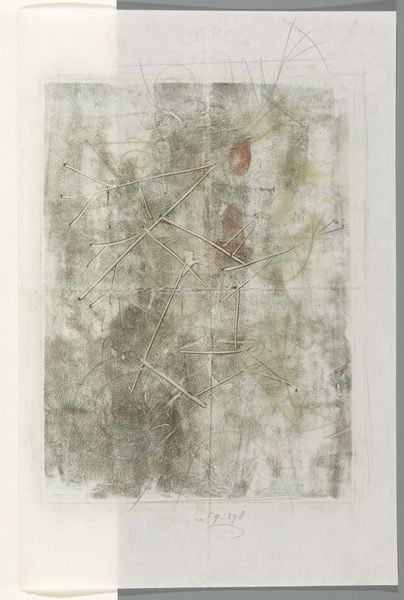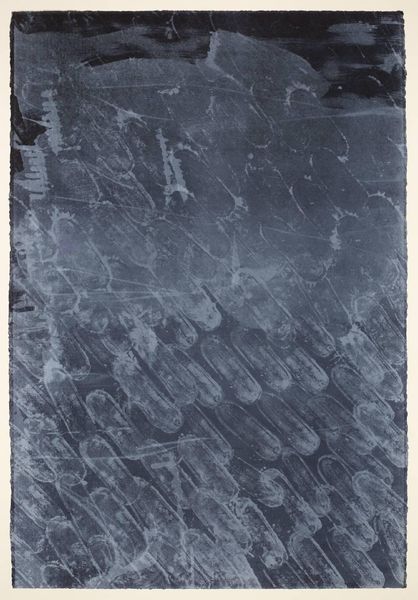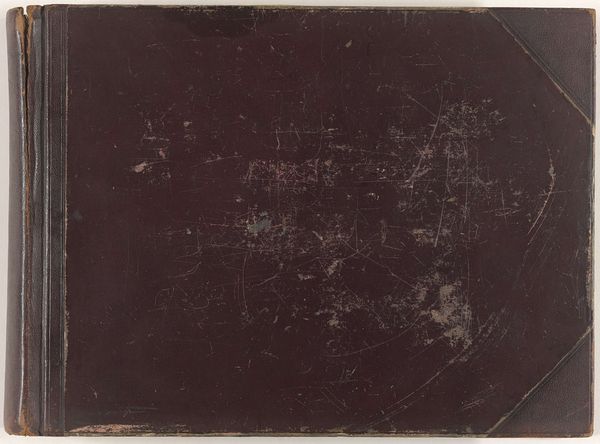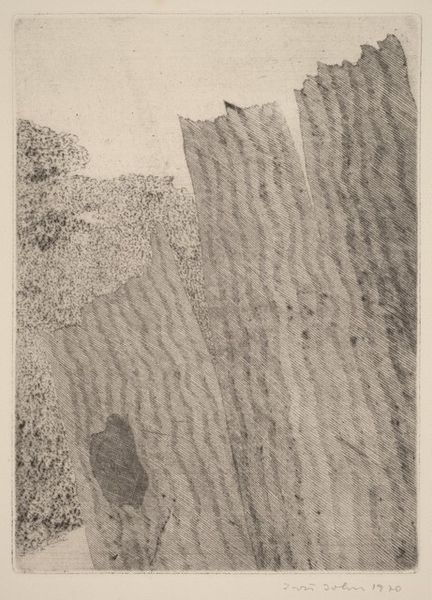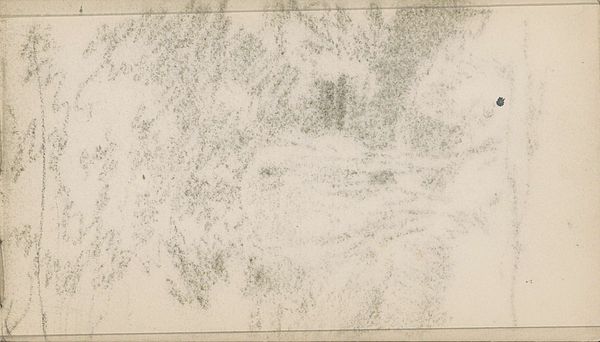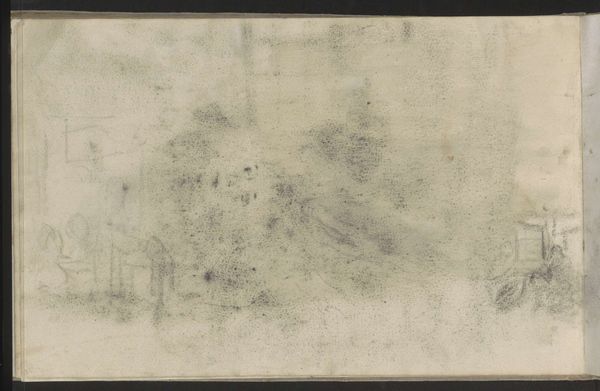
Dimensions: image: 551 x 382 mm
Copyright: © William Turnbull. All Rights Reserved, DACS 2014 | CC-BY-NC-ND 4.0 DEED, Photo: Tate
Editor: So, this is William Turnbull's "Sea Forms," from the Tate collection, its date is unknown and the material looks like ink on paper. The textures are quite striking. What can you tell me about the making of this work? Curator: The application of ink here, almost like rubbing or blotting, suggests a deliberate engagement with the materiality of the medium itself, challenging traditional notions of artistic skill. How do you see that relating to its subject matter? Editor: Well, the title suggests the sea, but the marks seem almost like industrial diagrams overlaid on natural forms. Curator: Precisely. Turnbull seems interested in exposing the labor involved in representation, the act of translating observed reality through industrial or scientific processes. It makes you wonder about the social and political context of representing nature at this time. Editor: That’s fascinating, it makes me look at the work with a completely different perspective. Curator: Indeed, it is about understanding what went into the art from a production standpoint.
Comments
Join the conversation
Join millions of artists and users on Artera today and experience the ultimate creative platform.
tate 7 months ago
⋮
The sculptor and painter William Turnbull was a pioneer of abstraction in Britain after the Second World War, and his subsequent career has included an exhibition at the Tate in 1973. His works explore concepts of growth and movement. He was influenced by the theory, widespread during the late 1940s, that structures in nature develop as a result of mathematical processes and often take the form of a spiral. Turnbull's Sea Forms is related to this idea. Like the other prints by Turnbull displayed here, this is a monotype, made by painting the image onto a surface and then laying the paper over it. Only one print results but spontaneous, textural effects can be produced. Gallery label, August 2004
